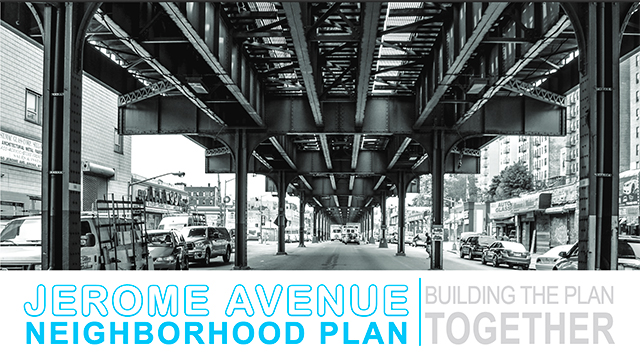Rezoning of Jerome Avenue
By Matthew Mallary
Jerome Avenue is quintessentially New York street with a quintessentially New York problem – gentrification.
In March of 2018 the New York City Council approved plans to rezone 92 blocks in the South Bronx. Local government and investors praise the plan for modernizing the Bronx, a neighborhood largely untouched by the gentrification that has crept into Harlem and Brooklyn.
Just as Jerome Avenue divides the West and East sides of the Bronx, the plan for its revitalization has split the community. Half side with the city, and say they want to bring the Bronx into the future. The other half are the residents, who have lived there for generations, and the local business owners who may be pushed out as a result of rising rents and costs of living.
Jerome Avenue is serviced by an elevated 4 train, that runs from 161st St, all the way to the border of the Bronx and Mount Vernon. Jerome Ave is one of the largest avenues in the city, and many of its residents have been there for a long time. It spans over six neighborhoods and the plans to rezone over 92 blocks affect over 275,000 people. Most of the population is Hispanic or Black. This has created friction within the community, as residents are worried about rising costs of living there.

The median income of the areas affected by the rezoning is $31,370, which is about $20,000 lower than the median income of New Yorkers in general. This means that the rezoning effort will affect some of the most impoverished New Yorkers, and perhaps it will cause another exodus of minority residents, paving the way for kombucha stores and shared workspaces. Of over 100,00 housing units, 95,086 are already occupied – and over 88,000 are occupied by renters, who are the most vulnerable to gentrification.
 This means that if capital is injected into the areas, this might start the chain reaction of gentrification. First, the rezoning is approved by the local government body. Then rezoned land is developed into luxury condos and expensive commercial stores. To cope with the rising prices of general goods and services in the neighborhoods, landlords being to raise rents and try to push older, minority, lower-income renters.
This means that if capital is injected into the areas, this might start the chain reaction of gentrification. First, the rezoning is approved by the local government body. Then rezoned land is developed into luxury condos and expensive commercial stores. To cope with the rising prices of general goods and services in the neighborhoods, landlords being to raise rents and try to push older, minority, lower-income renters.
A brochure from the DCP on the Jerome Avenue Implementation says that, “The Cross Bronx Expressway and a concentration of automotive and other industrial uses divide dense neighborhoods, affecting quality of life, health, and safety. Despite being a transit corridor itself, Jerome Avenue is often seen as a divider and a place to be avoided.”
It also says that housing is largely regulated and that the city has preserved has preserved over 5,500 units of affordable housing since the planning process began.
Members of Bronx-based activist group Hydro Punk and other organizations aren’t buying it. They protested a photo op scheduled by the DCP, where the Bronx Borough President Ruben Diaz was to make an appearance. The groups wanted to make their voices heard, chanting and displaying signs reading “gentrification is modern colonization.”

